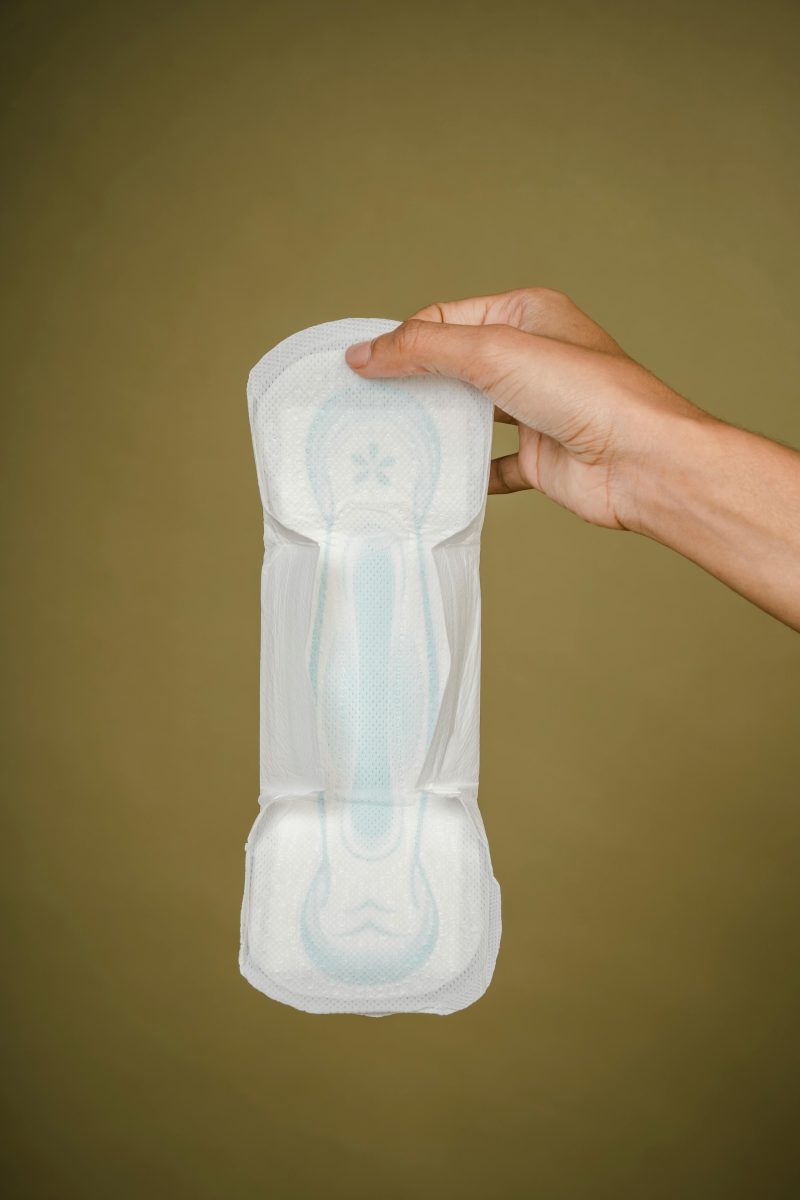Last Updated on: 14th July 2024, 09:32 am
Understanding Your Menstrual Cycle and Its Impact on Exercise

The menstrual cycle, a symphony of hormonal fluctuations, plays a pivotal role in determining energy levels, mood, and physical performance. It’s divided into several phases, each with its unique impact on the body. Initially, the follicular phase begins post-menstruation, marked by rising energy and strength, making it an ideal time for intense workouts. As ovulation approaches, many experience a peak in physical capability and mood.
Following ovulation, the luteal phase sets in. Here, progesterone rises, potentially bringing about feelings of bloating, fatigue, and sometimes a dip in motivation. This period might call for a gentler approach to exercise, focusing on activities like yoga or light cardio. Understanding these shifts is crucial; it empowers you to tailor your fitness routine, optimizing performance while honoring your body’s needs.
The science behind menstruation and exercise underscores the importance of listening to your body. Hormonal changes can significantly influence your energy, mood, and physical performance throughout the cycle. By aligning your fitness routine with these phases, you not only enhance your workouts but also promote overall well-being. It’s a strategy that harmonizes the natural rhythms of your body with your fitness goals, leading to a more balanced and effective approach to exercise.
Tailoring Your Fitness Routine to the Menstrual Phase

The Menstrual Phase (Days 1-5)
- During the initial days of your cycle, your body craves rest and recovery. Low-impact activities such as walking, gentle yoga, or stretching are ideal. This period is about honoring your body’s need for rest, allowing for a gentle transition into more active phases.
The Follicular Phase (Days 6-14)
- As you step into the follicular phase, your energy surges. It’s the perfect time to engage in high-intensity workouts and strength training. Your body is primed to tackle challenges, making it an opportune moment to push your limits and set new personal records.
The Ovulatory Phase (Days 15-23)
- Reaching the pinnacle of your cycle, the ovulatory phase, your body is at its peak performance. Endurance workouts and high-intensity interval training (HIIT) can be incredibly effective. This is when you can truly test your limits and enjoy the thrill of peak physical capability.
The Luteal Phase (Days 24-28)
- As the cycle winds down, the luteal phase ushers in a time for moderate exercises. Your body might feel more sluggish, making it a prime time for flexibility training, moderate hiking, or pilates. It’s about maintaining momentum while respecting your body’s slower pace.
Understanding and adapting your fitness routine to your menstrual cycle isn’t just about optimizing workouts; it’s a profound way to connect with and respect your body’s natural rhythms. By aligning your exercise regimen with these phases, you create a harmonious balance between activity and rest, ensuring a holistic approach to health and well-being.
Nutrition and Hydration Tips for Each Phase

Menstrual Phase (Days 1-5)
- Iron-Rich Foods: Focus on iron-rich foods like spinach, lentils, and red meat to counteract blood loss.
- Hydration: Increase your water intake to help with blood volume loss. Small, consistent sips throughout the day can make a significant difference.
Follicular Phase (Days 6-14)
- Protein and Complex Carbohydrates: Fuel your body with protein and complex carbohydrates for sustained energy. Lean meats, quinoa, and sweet potatoes are great choices.
Ovulatory Phase (Days 15-23)
- Balanced Meals: Incorporate a mix of proteins, fats, and carbohydrates. Foods like salmon, avocados, and brown rice offer the perfect blend of nutrients.
The Luteal Phase (Days 24-28)
- Magnesium-Rich Foods: Choose magnesium-rich foods such as nuts, seeds, and leafy greens to help reduce water retention and cravings.
- Smaller, More Frequent Meals: Opting for smaller, more frequent meals can help manage appetite and energy levels.
By tailoring your nutrition and hydration to each phase of your menstrual cycle, you support your body’s natural rhythm. This not only optimizes your fitness routine but also enhances your overall well-being. Remember, listening to your body and providing it with what it needs is the cornerstone of a balanced and healthy lifestyle.
Listening to Your Body: Adjusting Intensity Based on Symptoms

Recognizing the signs your body sends is crucial, especially when it comes to fatigue and hormonal fluctuations. These indicators should not be ignored. Instead, they serve as a guide for adjusting the intensity and duration of your workouts. For instance, during the luteal phase, when fatigue sets in, it might be wise to switch to lighter activities such as yoga or a leisurely walk.
Adjusting your workout intensity isn’t just about dialing back; it’s about listening and responding appropriately to what your body needs at different times. This approach ensures that you’re not overstraining, which could lead to injury or burnout. It’s about finding that sweet spot where you’re challenged without compromising your health.
The importance of rest and recovery cannot be overstated, particularly during sensitive periods of your cycle. These are the times when your body is working hard internally, and additional stress from high-intensity workouts could be counterproductive. Embracing rest days or incorporating gentle movement into your routine can significantly enhance your recovery. This not only aids in muscle repair but also prepares your body for more intense sessions in the future.
By tuning into your body’s signals and adjusting your fitness routine accordingly, you create a more sustainable and effective approach to exercise. This strategy not only respects your body’s natural rhythms but also promotes a healthier, more balanced lifestyle. Remember, fitness is a journey, not a race, and listening to your body is key to navigating this journey successfully.
Overcoming Common Challenges and Misconceptions

One of the most pervasive myths is that exercising during menstruation is harmful. This misconception stems from outdated beliefs and a lack of understanding of the body’s capabilities. In reality, engaging in physical activity throughout your cycle, including during menstruation, can alleviate symptoms like cramps and mood swings, and even reduce bloating. It’s about choosing the right intensity and type of exercise to complement your body’s needs at the time.
Dealing with cramps, bloating, and mood swings can be challenging, but exercise is a powerful tool in your arsenal. Gentle movements, such as yoga or a leisurely walk, can stimulate blood flow and release endorphins, your body’s natural painkillers. These activities not only help in reducing physical discomfort but also boost your mood, combating the emotional lows that can accompany your period.
The psychological benefits of maintaining an active lifestyle throughout your menstrual cycle are significant. Exercise is known to reduce stress and anxiety, improve sleep quality, and enhance overall mood. By staying active, you’re not just caring for your physical health; you’re also nurturing your mental well-being. This holistic approach to fitness ensures that you’re honoring your body’s needs, leading to a more balanced and fulfilling lifestyle.
Understanding and adapting to your body’s rhythms is key. It empowers you to make informed decisions about your fitness routine, ensuring that you’re working with your body, not against it. This alignment between your body’s needs and your exercise regimen paves the way for a more enjoyable and effective fitness journey.
Tools and Apps to Track Your Cycle and Fitness Progress

Menstrual tracking apps are revolutionizing the way individuals manage their health. These digital tools offer a window into one’s cycle, predicting periods, fertile windows, and potential symptoms. Features often include:
- Daily logging of physical and emotional states, which can reveal patterns over time.
- Educational content to help users understand the nuances of their menstrual health.
When fitness and menstrual tracking converge, the result is a powerful blueprint for well-being. This synergy ensures workouts are:
- Effective and in tune with the body’s varying needs throughout the cycle.
Personalizing your fitness routine becomes seamless with technology. Apps can:
- Remind you when to hydrate more.
- Suggest when to focus on strength training, or recommend a rest day.
They learn from your input, becoming more tailored over time. This personalized approach ensures that your fitness journey is as unique as your body, optimizing health and maximizing potential.
In Closing
Embrace your cycle, enhance your fitness. This journey marries self-awareness with physical vigor, fostering a unique path to wellness. By aligning exercise with the menstrual cycle, individuals unlock a harmonious blend of strength and serenity, navigating the ebb and flow of bodily rhythms with grace. The article illuminates a path of empowerment, urging a tailored approach to fitness that respects and leverages hormonal shifts. Let this knowledge inspire a commitment to adaptive, mindful fitness practices, paving the way for a healthier, more attuned existence.
Planning a Fitness Routine Around Your Menstrual Cycle FAQs
Yes, you can exercise during your period. Many find that engaging in light to moderate exercise can actually help alleviate cramps and improve mood. It’s important to listen to your body and adjust the intensity of your workouts according to how you feel.
Yes, menstrual cycle phases can affect exercise performance. Hormonal fluctuations throughout the cycle can impact energy levels, strength, endurance, and even coordination. Being aware of these changes can help you tailor your exercise routine to match your body’s varying capabilities and needs.
Tracking your menstrual cycle can significantly improve your fitness routine. By understanding the patterns in your energy levels, mood, and physical symptoms throughout your cycle, you can better plan your workout types, intensity, and rest days. This personalized approach can lead to more effective workouts and a more enjoyable fitness journey.
Adjusting your fitness routine to your menstrual cycle involves understanding your energy levels and symptoms at each phase. During the follicular phase (day 1-14), you might have more energy for high-intensity workouts, while the luteal phase (day 15-28) might call for more restorative exercises. Tracking your cycle can help you plan the most suitable activities for each phase.
The menstrual cycle can impact recovery times after workouts, with some phases requiring more rest than others. During the luteal phase, for example, higher progesterone levels can lead to increased fatigue, making recovery slower. Adjusting your workout intensity and allowing for more rest days during this phase can help accommodate your body’s needs.
During the ovulation phase, some women may experience heightened physical performance due to a peak in estrogen and testosterone levels. This could be a good time to focus on high-intensity workouts or personal bests. However, as some may also feel more discomfort or have a higher risk of injury, it’s important to stay mindful and possibly incorporate more dynamic warm-ups and cool-downs.
It depends on your body and how you feel. Some may find cardio helps in reducing fatigue and improving mood, while others might prefer strength training to maintain routine without overexertion. It’s beneficial to experiment and see what works best for you during this time.
Yes, changing your diet based on your menstrual cycle can support your fitness routine. During different phases of your cycle, your body’s nutritional needs change; for instance, you might need more carbohydrates and proteins during the luteal phase to support energy levels and recovery. Tailoring your diet to these needs can enhance your performance and overall well-being.
Syncing your workout routine with your menstrual cycle can lead to improved performance, reduced symptoms, and greater overall comfort. By aligning your exercise intensity with the natural fluctuations in your energy levels and hormonal profile, you can optimize your workouts and recovery. This approach encourages a more harmonious relationship between your body’s needs and your fitness goals.
During the premenstrual phase, focusing on gentle, restorative exercises like yoga, Pilates, or light walking can be beneficial. These activities can help manage premenstrual symptoms by reducing stress, bloating, and mood swings. It’s also a good time to incorporate stretching and mobility work to combat any water retention and stiffness.
Orlando is a all round athlete from Australia, now resident in Germany. His sports of passion of American Football(Offensive line), weight training and indoor rock climbing where he uses his 195cm wing span to his advantage.



